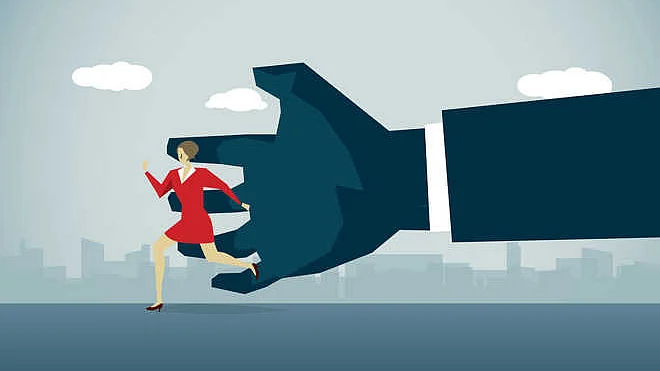Then and now: Viewing the ‘Nineties workplace’ in 2000s
There are many grey areas in the current landscape. But any young person who entered the workplace in the 1990s will testify to the enabling workplace culture of “boys will be boys”

#MeToo and its many avatars have been raging in India and the collective lava of suppressed emotions spewed forth, in all directions, singing some and submerging others. A constant in this debate has been the question of why it took 20 years for all this to come out? It is not a query easily dismissed and is worthwhile thinking back to those days in the 1990s when much of this was taking shape and form, to look for possible answers.
As a young working woman then, the lenses through which one viewed the workplace and relationships therein were starkly different. In certain professions, especially in media and the services sector, personal relationships in the workplace, including with the boss were commonplace and kept the cauldron of office gossip bubbling. In many a workplace, the attitude of the management was often ostrich like and if there were no complaints or showdowns, things could chug along indefinitely. Blatant favoritism, out of turn promotions and cozying up in official out-of-town conferences was all par for the course. Inevitably, in such a complicit environment, sucking up to the favored one, was the survival tactic adopted by most other subordinates, of both sexes. Invisible in plain sight, was the expected norm and anyone not following this was designated as ‘The Enemy’ and usually quit after a point. If you stuck it out and fought against the system, you were pretty much on your own.
Drinking at office parties was the norm, and drunken colleagues, spilling drinks and making sexists comments the inevitable outcome. Lewd jokes and personal remarks were common as men often ignored the presence of the few female colleagues around them. This was something the latter were grateful for and considered the best outcome, at least in those circumstances.
I remember only one incident where an off-color remark made by a drunk colleague to a female counterpart at an office party got reported, not by her, but by another male colleague. The man in question was hauled into the big boss’s room, which was full of other male bosses. The girl was called in, and the ‘culprit’ made to apologize. There was no HR representative or any other female present. The woman was expected to accept this apology, which in hindsight, seems coerced and blatantly insincere. That was the end of matter and it was business as usual after that. Both continued to work in their respective roles, including with each other.
One just had to side step and steer clear of dicey situations and have one’s own SafetyNet in the form of like minded colleagues of both genders. No one complained or protested the culture and the exploitative patriarchal mindset it was based on
If you happened to be in a male dominated department, say marketing or sales, you quickly identified the safe guys: mostly teetotalers, who often warned you off potential trouble spots and could be relied upon to drop you back home after the office party. Remember this was the time of the ‘Billa-Ranga’ kidnapping episode and getting home safely after a late party was the most worrisome thing a working girl faced.
I recollect one team-bonding exercise my 100 percent male teammates planned after a conference in Bangkok. The group, excluding the boss, but with his benevolence, planned to go to Pattaya after the conference. I thought I was included till I was gently told by an older colleague that ‘it wasn’t a good idea’ as the boys were going there for ‘fun’! Apparently, that was one of the reasons to have an official conference in Thailand.
Avoidance and ignorance were effective weapons, though we didn’t see that then. One just had to side step and steer clear of dicey situations and have one’s own SafetyNet in the form of like minded colleagues of both genders. No one complained or protested the culture and the exploitative patriarchal mindset it was based on.
In 2018, looking back, it is appalling that such behavior was considered normal and that the workplace and management were complicit in this ‘boys will be boys’ culture. Even women saw it as an inevitable fallout of working outside the professions of their mothers. Once you view things in this context, it is easier to see why the women who faced predatory males of a much more dangerous variety, did not consider complaining as a viable option then. Still, there were some who did take that path, but found no support, systemic or collegial. This is played out in many of the stories we are seeing today. Women did talk to their immediate managers or other senior colleagues about their situation but got no professional support.
One alternate strident view gaining momentum alongside the #MeToo outpourings, has been, that real harassment is dealt with there and then and that many stories are about quid pro quo arrangements going sour over time as the women in question gained stature and confidence. Admittedly there are many grey areas in the current landscape and there could be instances where this is true. But any young person who entered the workplace in the 1990s will testify to the enabling workplace culture of the day, that made behaviors and actions, that today are punishable offences, ubiquitous and commonplace.
The author is a corporate head and writer. The views expressed here are personal.
Follow us on: Facebook, Twitter, Google News, Instagram
Join our official telegram channel (@nationalherald) and stay updated with the latest headlines